No matter how many free tools crop up for ecommerce companies, a paid ad is sometimes your best bet for driving traffic to (and conversions from) your website.
The problem is other ecommerce and even brick-and-mortar competitors are using the same search terms and keywords you will. Not only do you need to know how to build a campaign through Google Ads, but you also need to know how to stand out from the crowd.
We'll start with a few real examples of AdWords campaigns -- a service now known as simply Google Ads -- and then throw in some pro tips for succeeding with your own search engine marketing strategy. By the time we're done, you'll be an expert.
AdWords Examples
- New Breed Marketing: what is inbound marketing
- Nettitude: cybersecurity
- Rock Content: content marketing course
- Destination Canada: cheap holiday destinations
- FM Training: LEED certification online
- LeftLane Sports: hiking boots for women
1. New Breed Marketing
Search term: what is inbound marketing

Links to:
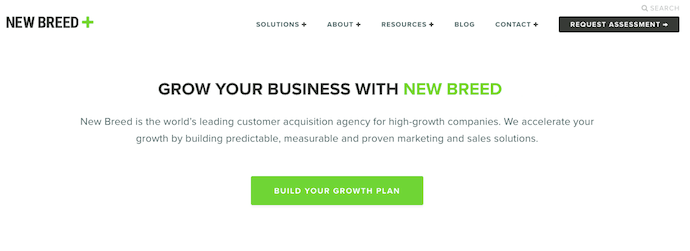
Some searchers might be ready to purchase something, but need to make sure what you're selling is what they're buying. That's the thinking behind the first AdWords campaign example, above.
New Breed Marketing, an agency partner of HubSpot, is an inbound marketing service provider. But because New Breed's customers might not know the services they want by the term, "inbound marketing," the company sought to define the term for them -- helping buyers confirm that inbound marketing is indeed what they're looking for.
New Breed Marketing's Google AdWords result, above, is as simple as search engine marketing gets. The meta-description is just one sentence long but indicates to searchers that inbound marketing is a "process" to be invested in.
Meanwhile, the blue link itself promises to explain inbound marketing in the form of a downloadable "guide." This ensures those who click through to the website are prepared to submit their contact information and become a lead in exchange for that guide. Remember, AdWords campaigns cost you money every time somebody clicks on your ads -- you need to get something out of those clicks.
2. Nettitude
Search term: cybersecurity

Links to:
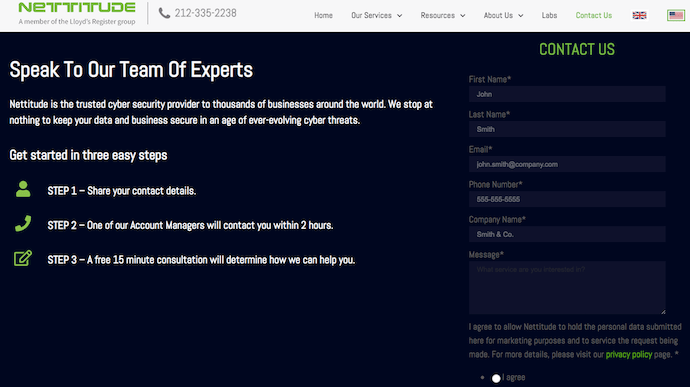
In general, the broader the search term, the less likely the searcher is to want to buy something right away (a pay-per-click concept called "match types"). In the AdWords campaign above, however, Nettitude bid on a broad, one-word search term -- "cybersecurity." While this broad search term doesn't target a specific searcher, the details of their Google Ad ensure the link can satisfy many different types of searchers no matter what their interest was when they typed in the word.
Nettitude's AdWords campaign, above, does two things well:
- First, its meta-description has several value propositions that most cybersecurity customers would be receptive to. This includes a "2 hour response time" and a "free initial consultation" to make a prospect's initial outreach convenient and low-commitment.
- Second, the ad displays a phone number directly on the page. When you bid on a search term that yields such a broad, diverse group of people, getting them on the phone is often the easiest way to nurture their interest so they don't wander off to another search result and forget about you.
3. Rock Content
Search term: content marketing course
 Links to:
Links to:
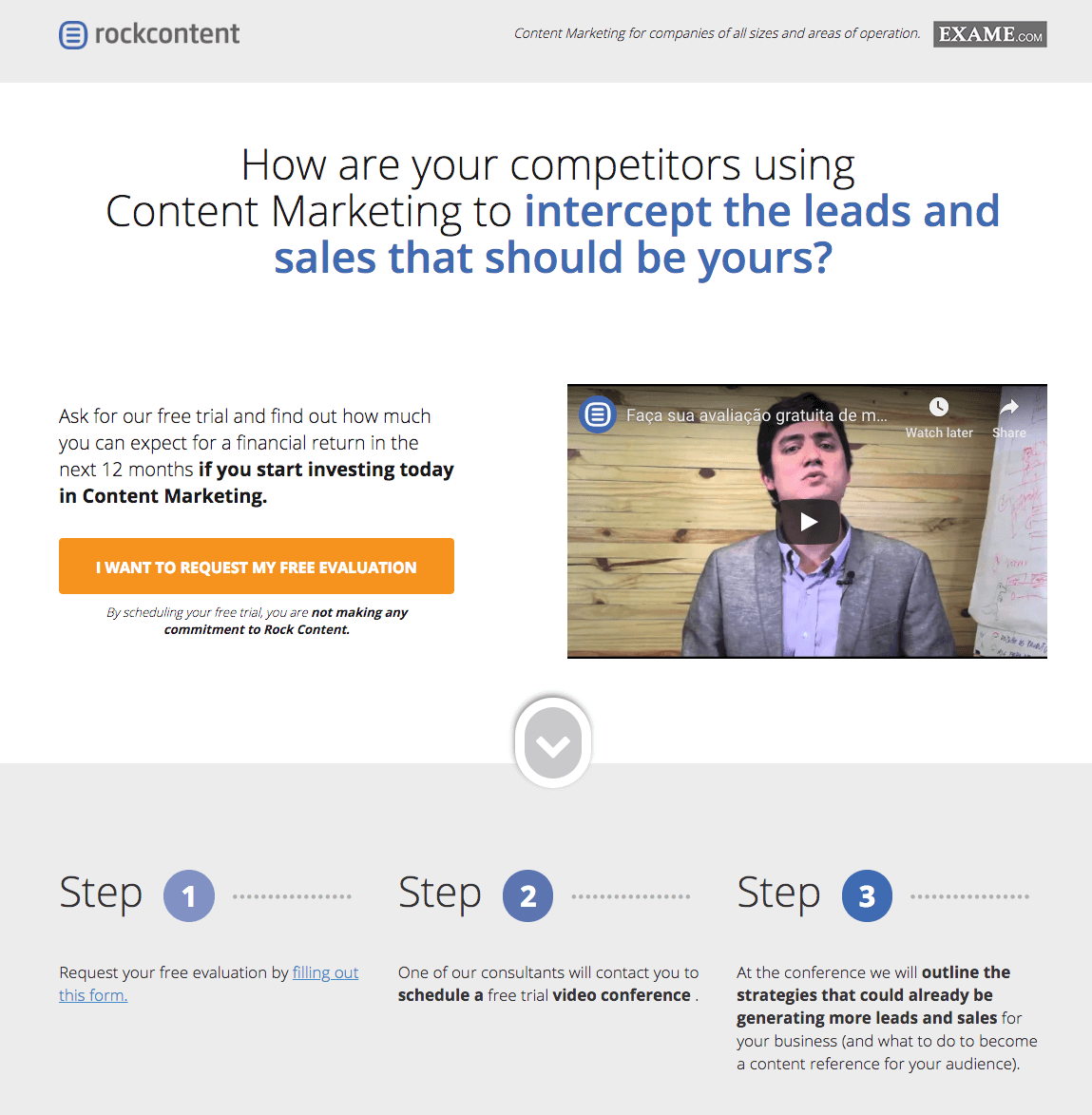
Rock Content, an agency partner of HubSpot, is a content marketing service based in Brazil. Its AdWords campaign, above, bid on a search term that's only somewhat related to the service Rock Content is offering on its landing page. But here's why it works.
The search term, "content marketing course," is intent on finding classes that help marketers increase their content marketing knowledge. Rock Content looks to pivot searchers from taking a class for improving their content knowledge to entering an "evaluation" for determining how much they already know.
This evaluation might not satisfy every searcher, but it is a smart way of pivoting their interest to a related service and introducing them to Rock Content's offerings at the same time.
4. Destination Canada
Search term: cheap holiday destinations

Links to:
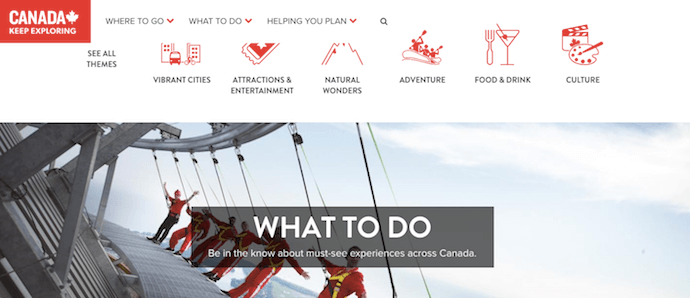 Similar to the third AdWords example on this list, this campaign example by Destination Canada pivots off of broad search term to drive value into its own offering.
Similar to the third AdWords example on this list, this campaign example by Destination Canada pivots off of broad search term to drive value into its own offering.
Canada Destination's Google Ads campaign, above, uses a searcher's general interest in taking a holiday trip to advertise all the fun parts of Canada. It's not a casual article, but it's also not a flight itinerary -- that middle-of-the-funnel space is what makes this campaign work so well.
The link above also uses two sub-links beneath the main blue link, highlighting the key subjects covered in the website to maximize the ad's clickthrough rate.
When people search for "cheap holiday destinations," it can be hard to gauge their level of interest just right. When launching a Google Ads campaign, you don't want your ad to be too broad to convert customers, but you also don't want to be so close to the cash register that your searchers aren't ready for what you're offering them. Canada Destination's digital tour of the country captures that middle ground perfectly, holding users' interest without chasing them away with overly specific content.
5. FM Training
Search term: leed certification online
 Links to:
Links to:
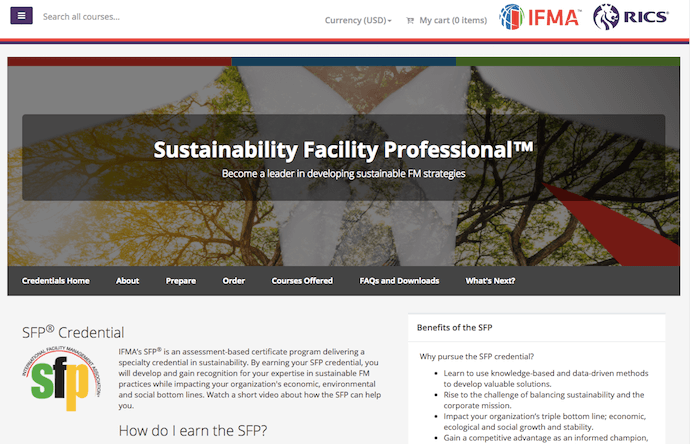
FM Training is a certification hub for facility managers (FMs), the same people who work to make their buildings facilities LEED-certified. Lots of coursework can go into earning this certification, but it can be a challenge to find curricula that caters to these professionals.
FM Training's AdWords campaign, above, makes sure FMs know they've come to the right place.
While the five blue links beneath the ad help users jump directly to the information they're most interested in, the first sentence of the meta-description is what really reaches out to this audience: "FMs ..." -- the audience is clearly stated in terms they'd understand -- "... see a salary increase of 6% or more within 1 yr." The ad uses the limited space it has to send a message designed to encourage clicks and make the ad worth the investment.
6. LeftLane Sports
Search term: hiking boots for women
 Links to:
Links to:
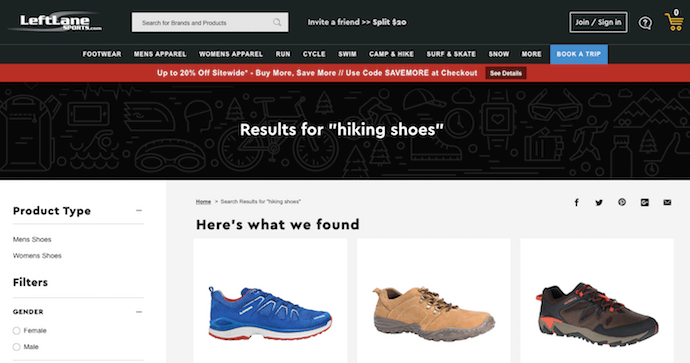
The campaign by LeftLane Sports, above, is an example of local business advertising done right. The company doesn't even need people to click on the link to make money from it.
If searchers in the Boston area search for "hiking boots for women," they won't just see a paid result by LeftLane Sports; they'll see where the brand's nearest storefront is and how long they're open. It's the perfect way to drive website traffic to the appropriate product pages and promote a local presence in the process.
How to Run a Successful Google Ads Campaign
1. Get an AdWords Account
Before you can do anything, you'll need to visit the AdWords site and sign up for an AdWords account. This involves some financial information so that Google can get paid for each click, so be ready with all your banking credentials.
Once you have an account and you're ready to go, click the Create Your First Campaign button.
2. Choose Campaign Type
Most would suggest starting with the "Search Network only" option, but you can change this as you learn and grow. Next, you'll want to give your campaign a name so you can track your results. It's a good idea to start with a naming system that you'll keep using so you don't get confused somewhere down the line.
3. Designate Geographic Area
Being an online shop does mean you're less concerned about geographic constraints. It's still not a bad idea to consider where, exactly, the majority of your audience lives. If you don't know, you may want to back up a step and consider your buyer personas first. Why spend money advertising to people in the Midwest if the bulk of your customers live in the Northeast?
You can also reach other countries if your ecommerce company serves international buyers. Just be sure you're prepared for any of the buyers who come your way as a result of your ads. You might pay a lot of money for visitors who can't make a purchase if you're not careful.
4. Set Your Budget
This is a pretty important step. You want to include enough money to make a difference, but you really don't want to break the bank. You can manually set the bids for clicks, which gives you more control. This also means your ads will stop showing once your budget is spent. That means you won't end up with a shocker of a bill later.
Once you've gotten the hang of everything, you can go back and change your settings to automatic or maybe even apply for a Google credit line. These are best left to experienced users, because it doesn't take much to completely empty a bank account just for paid clicks.
5. Write Your Ad
This is the most important aspect of your AdWords education. The copy you use is what will convince potential buyers to click. You want to attract plenty of people, yes, but you also want those people to buy. If they don't buy, you pay anyway. So start with a great headline that uses search terms that will reach your niche. You only get 90 characters, according to Google, so make every last one of them count. You might even need to use abbreviations, or you can search for shorter synonyms.
Then you get another 90 characters for the second and third lines. Use this space to point on benefits. How will the product solve your buyers' pain? Then on the third line you can capitalize on a feature. Be ready to change these if you notice your ad isn't gaining a lot of traction.
6. Add Your Display URL
It's important to notice the difference between the URLs you'll use in your ad. The display URL is the one you want people to remember. It's the home page to your website, the address people will type in if they visit without finding you through an ad first. This is what you want to display.
7. Add Your Destination URL
With a few exceptions -- one of which you'll see in the list of AdWords examples, above -- it's not a good idea to have a PPC ad that leads straight to your home page. You want a landing page that focuses on the products featured in the AdWords ad. If you send people straight to the home page, they'll have to do another search for the products they want, and they're not likely to stick around for that. This is why it's so important to understand the difference between the display URL and the destination URL.
8. Add Your Keywords
Keep in mind you'll be competing against many other companies for the same audience when bidding on keywords for which you want your ad to show up. Take some time to think of the keywords that will reach people who are ready to buy. For instance, instead of using "luxury shoes" in your PPC ad, you can use keywords such as "red leather heels." Maybe you'll miss out on people who are looking for shoes of all types, but you'll snag those who have a particular shoe in mind. They'll be more likely to make a purchase if your ad leads to a landing page with red leather heels, and that will more than pay for their click.
You can also use negative keywords and save a lot of money on your clicks. These tell AdWords what you don't want your ad to show up for. In other words, you can use keywords such as red leather heels not stilettos.
9. Bid On Your Clicks
Finally, you'll need to tell Google how much you want to spend on your clicks. Remember, you're bidding on visibility here. Those willing to pay more for clicks will show up more often in the searches. You really do have to spend money to make money, especially in the pay-per-click game. As long as you're manually controlling your budget, you can go all out for clicks until your cash runs out and just replenish your budget when you're ready to go again.
10. Double Check Your Double Check
It's always a good idea to check over everything one more time before you set your ad in motion. Is everything spelled correctly? You'll miss out on keyword searches if you typo one of them. Did you make sure to manually control the budget? You could end up broke tomorrow if you didn't. When you're sure you did everything correctly, then take a deep breath and launch.
Beyond setting everything up correctly, you'll also want to A/B test your results often. Change headlines, introduce new features, focus on different benefits -- and then take note of the number of conversions. There's always a way to make your ad perform better.
from Marketing https://ift.tt/2usx1Ko
via


No comments:
Post a Comment